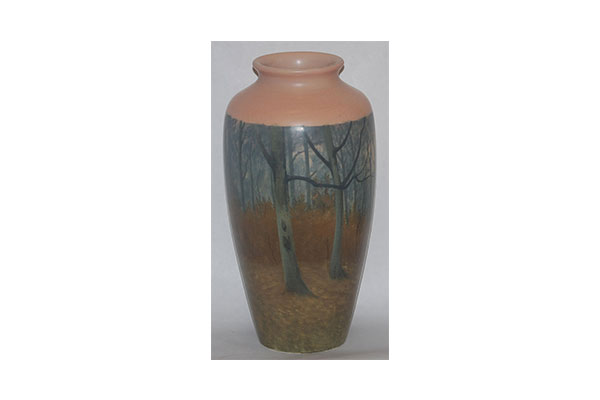
**Note: A few of our readers mentioned the link to the Cincinnati Historical Society was broken. It should be working now. Thank you.**
As much as a contemporary society thrives on its digital photography and impressive tricks a computer can make happen, I think sometimes we forget the rich history and tales of those classic black and white photos of years past. I was reminded of that today as I was leafing through Rookwood Pottery: The Glaze Lines by Anita J. Ellis.
There are many of those great black and white photos of the people who made the Rookwood Pottery line the spectacular collection it is today. Not only that, but it’s what’s caught in the background of some of these photos that will cause you to really look deeper to see how different things were then than what are today. Before long, I realized the photographs were included in her book courtesy of the Cincinnati Historical Society. You can see the entire collection of Rookwood Pottery photos here.
There is a photo of the decorating department in its then-new building in Mt. Adams. Usually, we think of these “departments” as brightly lit with no shortage of impressive machinery to ensure profitability and exact replication abilities. Of course, that’s the beauty in American art pottery – we never have to worry about an exact replica of anything. There is a long row of tables in a room with exposed beams and a center dividing shelf between the artists who face one another. The chairs are the traditional slat back chairs we clamor to find today in order to add a bit of texture and dimension into our “modern” homes. Instead of a series of computers lining those tables, you see potters wheels, along with artists hard at work. While I’m sure the area was well-lit, the absence of fluorescent lighting makes it appear not so.
In another telling photo, Decorator E.T. Hurley is shown carefully paining vines on a vase. It rests atop his own wheel and to his left is a window that provides natural light and behind the vase is a painting I’m sure he’s pulling his inspiration from. Along the window ledge are two containers holding various sized paint brushes and tacked next to the window, at eye level, is a pocket watch hanging by its chain along with what looks like a thermometer. That wouldn’t surprise me since temperature control was a consideration back then with all of the paints and glazes.
Of course, the women all have their hair pulled back. The last thing they’d want to scramble with is pulling hair out of their works of art or to have to constantly push it behind their ears to keep it out of their line of vision. They’re all wearing skirts and comfortable shoes and in every single photo I looked at, there’s not one set of eyes looking anywhere than at the task at hand.
Taking a walk in history, via photographs, is a great way to gain new perspective on American art pottery and today, I certainly have a new appreciation for the beauty that is Rookwood Pottery.


